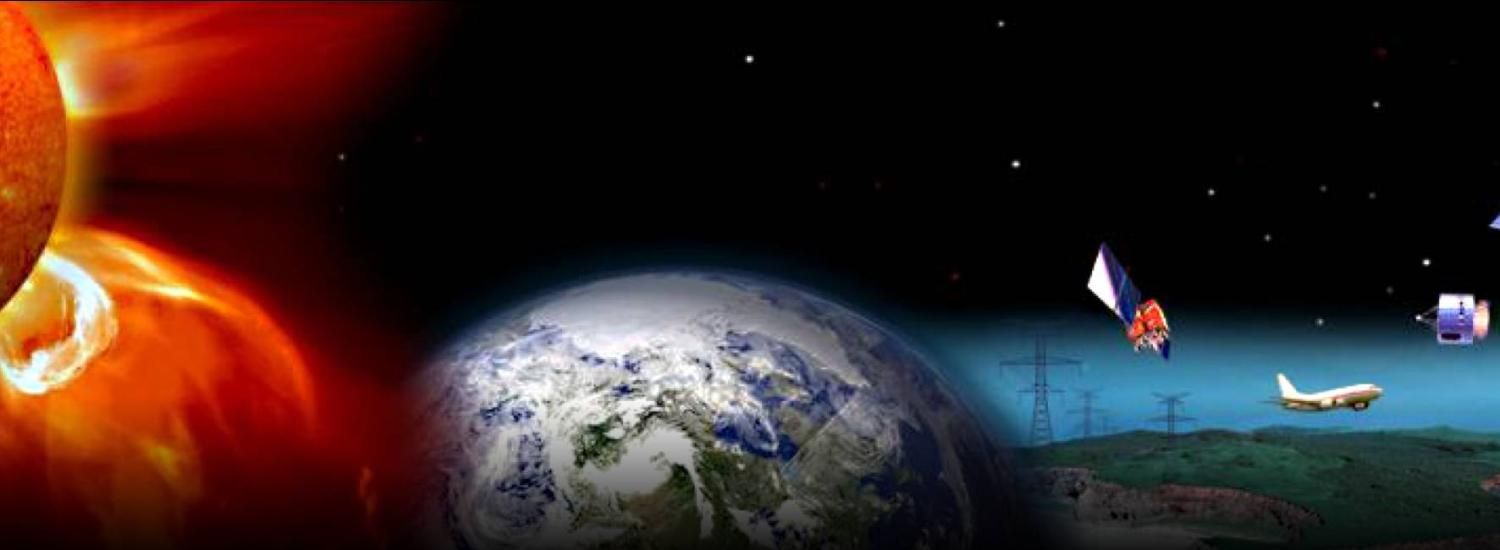New space weather model promises better forecasts, more targeted warnings
NOAA’s National Weather Service using a CIRES-developed computer model

NOAA’s National Weather Service is now using a CIRES-developed computer model to better understand and forecast how events that begin 93 million miles away, on the surface of the Sun, can affect technological systems on and around Earth. Incoming “space weather” from the Sun can briefly blot out radio communications here, nudge satellite trajectories, and force the hands of airline and human space flight managers.
“The new model will help our forecasters deliver better and more timely space weather forecasts and warnings,” said Michael R. Farrar, director, NOAA’s National Center for Environmental Prediction. “The WAM-IPE Model will be an asset as we prepare for an increase in space weather expected during Solar Cycle 25.”
The Whole Atmosphere Model and Ionosphere Plasmasphere Electrodynamics Model, or WAM-IPE, has been taking shape at the University of Colorado Boulder and NOAA’s Space Weather Prediction Center (SWPC) and Environmental Modeling Center (EMC) for more than 15 years. The team’s work—originally led by CIRES senior scientist Timothy Fuller-Rowell and now by research scientist Tzu-Wei Fang—has resulted in a first-of-a-kind model that brings two existing operational models down to Earth.
One, the WSA-ENLIL solar wind propagation model, considers events on the surface of the Sun and how they may send energy and material streaming toward our planet. Then, the Geospace Model considers what will happen when that material hits Earth’s magnetosphere, perturbing it in a way that can create spectacular aurora as well as more risky impacts to satellites and astronauts.
“WAM-IPE closes the final link, taking us from the Sun to mud, considering everything that comes up from the troposphere and down,” Fuller-Rowell said. It’s in the troposphere that terrestrial weather takes shape, convective storms form and winds flow. Such weather can change how space weather affects satellite environments or the atmospheric layer where radio waves propagate.
So the newest model can help satellite and airline operators anticipate high-frequency radio outages, for example, or “storms” that lead to inaccurate navigation. Both types of forecasts are critical for the International Civil Aviation Organization, which relies on SWPC (and other centers around the world) to predict outages.
Fuller-Rowell said that eventually, the WAM-IPE model—whose development has been funded over the years by NASA, NOAA, the National Science Foundation, and the U.S. Air Force—may be able to do much more. “It’s a bit like the first operational weather models 50 years ago,” he said. “We had nothing to compare results to.... It was all new.”
WAM-IPE, as scientists improve the model over time, could eventually help the international community manage the growing number of satellites in orbit, to prevent collisions and other interactions. Space weather and its interaction with terrestrial weather below, influence the precise trajectory of those satellites. WAM-IPE, with its more realistic depiction of the upper atmosphere, can already capture some features likely to impact satellites.
The new model also promises to help with the navigation system that the FAA relies on for aircraft navigation. FAA’s Wide Area Augmentation System relies on precision GPS, which is impacted by space weather. It’s critical to know when WAAS will be unreliable and alternative navigation systems should be used, and WAM-IPE shows promise in forecasting those outages, Fuller-Rowell said.
Tantalizingly, WAM-IPE could even help improve lower atmosphere weather forecasts by better depicting what is going on higher in the atmosphere. That could help forecasters anticipate, sooner, incoming large-scale meteorological events such as sudden stratospheric warmings, which can dramatically influence weather in the United States and elsewhere.
NOAA called the WAM-IPE Model “a research-to-operations success story, developed by scientists from the Cooperative Institute for Research in Environmental Sciences (CIRES) and NOAA’s SWPC and Environmental Modeling Center.” Now, Tzu-Wei Fang, Fuller-Rowell and their colleagues, will develop the forecast model further, to see how much they can learn from it and improve it.